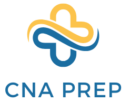Learning how to become a CNA in Montana is simpler than you think.
- Steps to get certified: Understand the certification steps needed to become a CNA in Montana.
- Essential prerequisites: Know the key requirements to start your journey.
- Career opportunities: Discover the possibilities after certification.
Start your journey today on how to become a CNA in Montana.
- Understanding the Role of a CNA
- CNA Requirements in Montana
- Finding and Choosing the Right CNA Program
- Certification: Your Pathway to Becoming a CNA
- CNA Training Programs in Montana
- The CNA Certification Exam
- Obtaining Your CNA License
- Maintaining and Renewing Your CNA Certification
- Career Opportunities and Salary Expectations for CNAs
- Tips for Success as a CNA
- Looking for Nursing Assistant Information On States Bordering Montana?
- Conclusion
Understanding the Role of a CNA
Certified Nursing Assistants (CNAs) are crucial members of the healthcare team. They provide essential support to Registered Nurses (RNs) and Licensed Practical Nurses (LPNs). By assisting patients with daily activities such as bathing, dressing, and eating, CNAs ensure that patients receive personalized and compassionate care.
Key Responsibilities of a CNA
When you’re a CNA, you handle numerous responsibilities that directly impact patient well-being:
- Personal Care: Helping patients with personal hygiene, grooming, and toileting.
- Vital Signs Monitoring: Measuring and recording patients’ vital signs, including temperature, pulse, and blood pressure.
- Mobility Assistance: Assisting patients with moving around, including transferring from beds to wheelchairs.
- Feeding and Nutrition: Ensuring patients receive proper nutrition by feeding them or helping them eat.
- Emotional Support: Providing emotional support to patients, offering companionship and understanding.
By performing these tasks, CNAs form close relationships with patients, contributing to their emotional and physical recovery.
The Importance of CNAs
In the healthcare ecosystem, CNAs fill a vital role. They are often the first point of contact for patients, which means they can notice changes in a patient’s condition quickly. This early detection can be life-saving. Moreover, with an aging population, the demand for CNAs continues to grow, ensuring job security and opportunities for career advancement in the healthcare sector.
CNA Requirements in Montana
If you’re considering a career as a CNA in Montana, you need to meet specific requirements designed to prepare you for the role.
Age and Education
- Minimum Age: You must be at least 16 years old.
- Educational Qualification: A high school diploma or GED is necessary.
Training Program
Completing a state-approved CNA training program is mandatory. These programs ensure that you receive both theoretical knowledge and practical skills necessary for the job.
- Minimum Training Hours: At least 75 hours of instruction, which includes:
- Classroom Learning: Understanding basic nursing skills, anatomy, and patient care ethics.
- Clinical Practice: Hands-on experience in a healthcare setting under supervision.
Health and Background Check
Before enrolling in a CNA program, you’ll need to pass several screenings:
- Criminal Background Check: Ensuring a clean criminal record.
- Health Screening: Verifying that you are physically capable of performing CNA duties.
- Immunization Proof: Immunization records to safeguard both you and your patients.
These requirements are in place to ensure that all CNAs are well-prepared and reliable.
Finding and Choosing the Right CNA Program
Selecting the right CNA program in Montana is pivotal to your success.
Accreditation and Approval
- State Approval: Ensure the program is accredited by the Montana Department of Public Health and Human Services (DPHHS). This guarantees that the curriculum meets the state’s educational standards.
Factors to Consider
When choosing a CNA program, consider these crucial factors:
- Location: Prefer programs close to your home to reduce commute time and costs.
- Cost: Program fees vary, so compare costs and check if financial aid or payment plans are available.
- Program Duration: Program lengths range from 4 to 12 weeks. Choose one that fits your schedule.
- Program Quality: Investigate graduation rates and the pass rate for the certification exam. High rates indicate a robust program.
Research and Comparison
Take your time to research thoroughly. Compare multiple programs, read reviews from former students, and visit campuses if possible. Ensuring that you select a quality program will set you up for success.
Certification: Your Pathway to Becoming a CNA
Once you complete your training, certification is the next crucial step. Certification verifies your competence and skills, making you a recognized professional in the field.
Overview of the Certification Process
Here’s a succinct breakdown of the certification steps:
- Completion of Training: Graduate from an approved CNA training program.
- Apply for Examination: Apply through the Montana Board of Nursing.
- Pass the Exam: Successfully pass both the written and skills portions of the certification exam.
Importance of Certification
Certification not only validates your skills but also increases your employability, giving you access to various healthcare job opportunities in Montana. To explore more about local CNA training programs, you can find details on the Montana Board of Nursing website.
CNA Training Programs in Montana
Montana offers a variety of CNA training programs through community colleges, vocational schools, and healthcare facilities.
Notable Training Institutions
Some prominent institutions provide quality CNA training in Montana:
- Flathead Valley Community College: Known for its comprehensive curriculum and experienced faculty.
- Great Falls College MSU: Offers an extensive CNA training program with flexible scheduling options.
- Helena College University of Montana: Provides thorough training with both theoretical and clinical components.
Program Curriculum
These programs typically cover the following:
- Basic Nursing Skills: Training in foundational medical procedures and patient care.
- Patient Care: Techniques for assisting with daily living activities.
- Clinical Practice: Practical experience in a real-world healthcare setting.
Flexible Learning Options
Many schools offer flexible schedules and online options to accommodate different learning needs. This flexibility allows working students or those with other commitments to pursue their CNA certification.
By choosing the right training program, you lay a strong foundation for your career as a CNA in Montana.
The CNA Certification Exam
Overview of the Certification Exam
The CNA certification exam in Montana is designed to assess your knowledge and practical skills. You must pass both parts of the exam to achieve certification.
- Written Exam: This section comprises multiple-choice questions covering patient care, infection control, basic nursing skills, and ethical practices.
- Skills Test: This practical test evaluates your ability to perform specific CNA tasks in a controlled setting.
Preparing for the Written Exam
Success in the written test requires thorough preparation.
- Study Guides: Use study guides and textbooks specifically tailored for CNA candidates.
- Practice Tests: Taking practice exams can familiarize you with the question format and timing.
- Review Material: Focus on key topics like infection control, personal care skills, and patient rights.
Tackling the Skills Test
The skills test evaluates your hands-on ability to perform essential CNA duties.
- Practice Regularly: Gain hands-on practice in a clinical setting or through simulation labs.
- Understand Each Skill: Break down each skill step by step, ensuring you understand the correct procedure.
- Stay Calm: On exam day, remain calm and composed to perform each task efficiently.
Importance of Passing Both Sections
You need to pass both the written and skills tests to obtain your CNA certification. This ensures you have the practical skills and theoretical knowledge required to provide high-quality patient care.
Obtaining Your CNA License
The Application Process
Once you pass the certification exam, you’ll need to apply for your CNA license through the Montana Board of Nursing.
- Submit Application: Complete and submit the application form available on the Board’s website.
- Background Check: Provide a criminal background check to ensure your eligibility.
- Pay Fees: Pay the required application fee.
Post-Application Steps
After submitting your application and necessary documents, the Board reviews your eligibility.
- Verification: The Board verifies your exam results and background check.
- License Issuance: Upon approval, you receive your CNA license, allowing you to work legally in Montana.
Maintaining Your License
It’s crucial to keep your license current.
- Renewal: CNA licenses in Montana must be renewed every two years.
- Continuing Education: Complete the required continuing education and work hours.
Maintaining and Renewing Your CNA Certification
Continuing Education Requirements
Continual learning is vital for professional growth as a CNA.
- Annual Hours: Complete a minimum of 12 hours of continuing education annually.
- Course Topics: Courses should cover relevant topics such as advanced patient care techniques, infection control, and communication skills.
Renewal Process
Stay proactive about renewing your certification.
- Work Hours: Ensure you have at least eight paid work hours as a CNA within the renewal period.
- Application Submission: Submit your renewal application online through the Montana Board of Nursing.
- Renewal Fees: Pay the renewal fee to complete the process.
Benefits of Keeping Your Certification Current
Maintaining your certification ensures you remain qualified and up-to-date with the latest practices, maximizing your employment opportunities.
Career Opportunities and Salary Expectations for CNAs
Employment Settings
As a CNA in Montana, you can work in various healthcare environments.
- Hospitals: Fast-paced settings like Providence St. Patrick Hospital in Missoula.
- Long-Term Care Facilities: Providing sustained care at facilities such as Heritage Place in Kalispell.
- Home Healthcare: Offering personalized care in patients’ homes.
Job Demand
The demand for CNAs in Montana is strong due to an aging population and an increased need for healthcare services.
Salary Expectations
Though salaries can vary by location and experience, the average annual salary for a CNA in Montana is approximately $29,000. With experience and additional certifications, you can explore higher-paying roles.
Tips for Success as a CNA
Enhancing Patient Care
High-quality care involves a blend of skills and personal attributes.
- Effective Communication: Develop strong communication skills to interact positively with patients.
- Empathy: Show empathy and compassion to build trust and improve patient outcomes.
Time Management and Organization
Efficient time management is crucial in a CNA’s role.
- Prioritize Tasks: Manage your time effectively by prioritizing tasks based on urgency.
- Stay Organized: Keep your workspace tidy and maintain clear documentation.
Continuous Learning and Networking
Stay committed to your professional growth.
- Continuing Education: Always seek to enhance your knowledge through additional courses.
- Professional Networking: Connect with other healthcare professionals for support and mentorship.
Looking for Nursing Assistant Information On States Bordering Montana?
In addition to Montana, we suggest looking for schools in nearby states.
- How to Become A Nursing Assistant in Idaho
- How to Become A Nursing Assistant in Wyoming
- How to Become A Nursing Assistant in South Dakota
- How to Become A Nursing Assistant in North Dakota
- How to Become A Nursing Assistant in Minnesota
Conclusion
Becoming a CNA in Montana involves meeting specific educational requirements, passing certification exams, and maintaining your license through ongoing education. This rewarding career offers opportunities for growth and the chance to make a significant impact in the lives of patients. Start your journey today and begin making a difference in the healthcare field.

